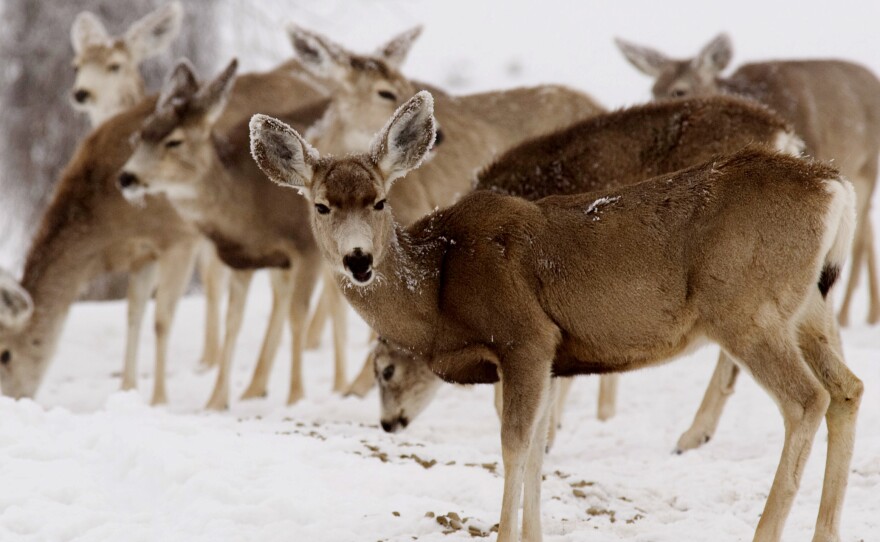An annual report shows that roadkills of California’s native deer, the mule deer, have dropped annually by 10% for the past seven years. And that’s not because Californians have become more careful drivers.
The report on roadkill from the Road Ecology Center at UC Davis is a strong indication that mule deer populations are dropping. The center’s director says the roadkill data is consistent with other estimates of falling deer populations.
“If it’s really true that deer are going down by 10% per year, then we have a serious ecological and social problem,” center director Fraser Shilling said. “This is an iconic species for California. People love them, and they are a keystone species in ecosystems. You lose deer, you're going to lose mountain lions. You’re going to lose gray wolf.”
He said climate change was also a factor in mule deer declines.
The report found that 20,000 deer are killed every year in vehicle accidents in California — but that is only based on auto insurance claims. Shilling said that by itself was a serious underestimate because many drivers who hit deer do not file insurance claims.
Shilling said cars killed more deer than hunters did. He said there were an estimated 400,000 to 500,000 mule deer in California, and a 10% reduction in that population every year is not sustainable.
The report says coyotes are another species with fewer roadkills and a falling population.
The state of California is taking some steps to prevent roadkill. The California Wildlife Conservation Board has funded a plan to build fencing and freeway crossings to protect endangered peninsular bighorn sheep in Imperial County.
Shilling said the crossings would have to pass over the I-8 freeway because the sheep are high-terrain creatures who won’t pass under the road.
“What we’re looking at is planning one or more overpasses, we call them, or overcrossings. So they can go from a rocky ridgeline across a rocky bridge, up the other side and they never have to look at the highway or touch it,” Shilling said.
He expects the crossings to be built by 2030.






